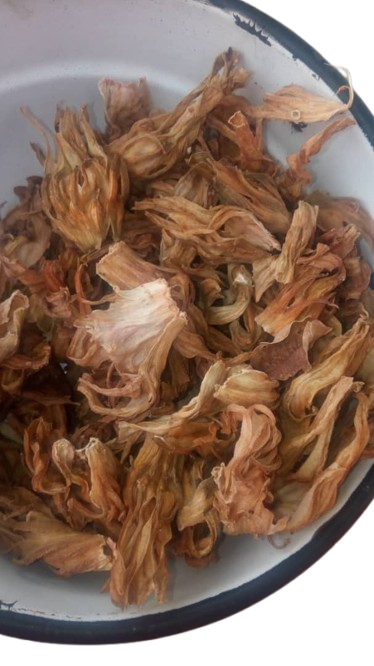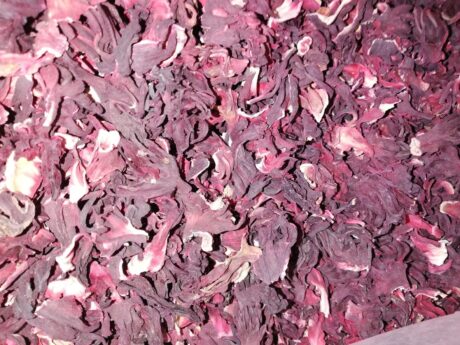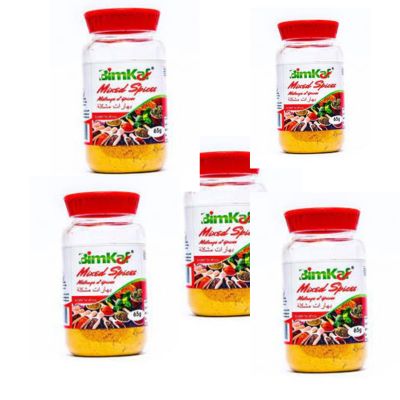The plant is popular in folklore medicine. It has been used for the treatment of a variety of conditions such as rheumatism, cough, asthma, tonsillitis, diarrhoea, body pain, arthritis, heartburn, skin ulcers, peptic ulcer, diabetes mellitus and microbial infections. It is applied to wounds, boils and insect bites. In Nigeria, the plant is particularly known for its effective wound healing properties and detachment of the umbilicus of infants. Cough medicine is made from the roots in Sierra Leone. Heated leaves are used for swellings and abscesses in Jamaica. It is used for rheumatoid arthritis, bruises, burns and ulcers in China. In the KwaZulu-Natal Province, South Africa, the leaves are used in combination with Opuntia stricta and Euphorbia hypericifolia to treat gonorrhea.
Pharmacological studies on it reported several biological activities, some of which could authenticate the plant’s traditional uses including immunomodulatory, CNS depressant, analgesic, anti-inflammatory, anti-microbial, anti-tumour, anti-ulcer, insecticidal, anti-diabetic, anti-convulsant, antioxidant and anti-hypertensive properties. Studies have also reported a wide range of active phytochemicals such as alkaloids, triterpenes, glycosides flavonoids,steroids, bufadienolides, lipids and organic acids. These compounds have been considered to be responsible for the plant’s diverse pharmacological activities.
Related News
Nigeria’s medicinal plant: Gongronema latifolium (Arokeke)
In many cases, B. pinnatum leaves were soaked in cold water overnight, boiled in water, squeezed or roasted and the extracts obtained to treat ailments. It is also consumed as tea and blended into juices or eaten raw. The plant is a blood purifier and it is a famous medicine to cure kidney stones. The root is used to treat high blood pressure and also to prevent any kind of cardiac problem. The leaf is used for the treatment of fever. The extract of the plant is used for the treatment of roundworms. Using the juice of this plant as ear drop heals ear pain. The root is believed to protect the liver and has proven to be useful for the treatment of hepatitis. It is a diuretic. Because of its antioxidant property, the plant is used in the mixture of herbal green tea. It is used as a home remedy for piles (Haemorrhoids).The leaf juice is used for the treatment of stomach ache. Extract of the plant is used for the nourishment of the hair and for treating gray hair. The leaves are used for intestinal disorders. The paste is used for leucorrhoea. Fresh juice of this plant can be used to treat jaundice.
Because it is used traditionally in ethnomedicinal practices for the treatment of kidney stone and urinary insufficiency, this claim was put to test in a study titled, “Bryophyllum pinnatum Leaf Extracts Prevent Formation of Renal Calculi in Lithiatic Rats by Mahendra Yadav et al.” The conclusion is that Bryophyllum pinnatum leaves showed preventive effect against renal calculi formation and validates its ethnomedicinal use in urinary disorders. It further supports its therapeutic potential for the treatment of urinary calculi (Renal or urinary calculi also called urolithiasis is a condition which involves the process of formation and retention of stone(s) in kidney, bladder and/or urethra that results in renal colic, urine retention and pain in the abdomen and flank).In another study titled. “Antimicrobial and antioxidant activity of kaempferol rhamnoside derivatives from Bryophyllum pinnatum” by Simplice Joel Ndendoung Tatsimo et al, the conclusion is that findings in the study demonstrate that Bryophyllum pinnatum and some of its isolated compounds have interesting antimicrobial and antioxidant properties and therefore confirming the traditional use of B. pinnatum in the treatment of infectious and free radical damages.








